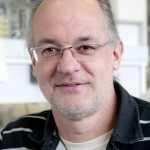Link to Pubmed [PMID] – 25275500
PLoS ONE 2014;9(9):e108930
Telomeres define the ends of chromosomes protecting eukaryotic cells from chromosome instability and eventual cell death. The complex regulation of telomeres involves various proteins including telomerase, which is a specialized ribonucleoprotein responsible for telomere maintenance. Telomeres of chromosomes of malaria parasites are kept at a constant length during blood stage proliferation. The 7-bp telomere repeat sequence is universal across different Plasmodium species (GGGTTT/CA), though the average telomere length varies. The catalytic subunit of telomerase, telomerase reverse transcriptase (TERT), is present in all sequenced Plasmodium species and is approximately three times larger than other eukaryotic TERTs. The Plasmodium RNA component of TERT has recently been identified in silico. A strategy to delete the gene encoding TERT via double cross-over (DXO) homologous recombination was undertaken to study the telomerase function in P. berghei. Expression of both TERT and the RNA component (TR) in P. berghei blood stages was analysed by Western blotting and Northern analysis. Average telomere length was measured in several Plasmodium species using Telomere Restriction Fragment (TRF) analysis. TERT and TR were detected in blood stages and an average telomere length of ∼ 950 bp established. Deletion of the tert gene was performed using standard transfection methodologies and we show the presence of tert- mutants in the transfected parasite populations. Cloning of tert- mutants has been attempted multiple times without success. Thorough analysis of the transfected parasite populations and the parasite obtained from extensive parasite cloning from these populations provide evidence for a so called delayed death phenotype as observed in different organisms lacking TERT. The findings indicate that TERT is essential for P. berghei cell survival. The study extends our current knowledge on telomere biology in malaria parasites and validates further investigations to identify telomerase inhibitors to induce parasite cell death.

